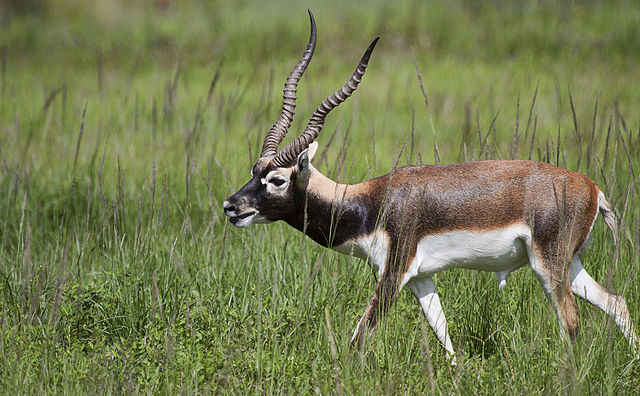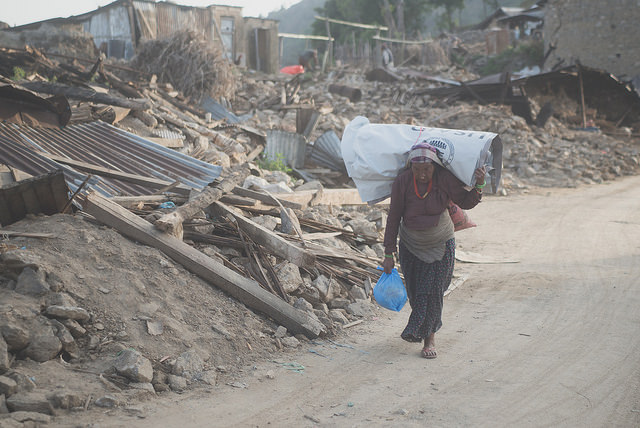Last updated on February 3rd, 2022
40. Nepal’s national airline lacks enough planes to fly to any airports out of Asia. Flying into Nepal is very expensive.
41. Nepal excels as an arena for adventure and extreme sport tourism. Choices include paragliding, bungee jumping, high altitude marathons, and mountain biking, white-water rafting, kayaking and, of course, mountaineering.
42. Although Nepal has fresh water rivers and over 6,000 lakes generating hydro-electric power, the demand is so much greater than production that everyone must live without electricity for a large part of every day. The “load shedding” on average currently is 8.28 hour daily. Worse, winter is the season when demand rises to its highest level while supplies fall to their lowest.
43. With all that fresh water available, water supply for the towns is problematic. The infrastructure can produce around 180 million liters a day in Kathmandu while the average demand is over 350 million liters daily. Generally water is only supplied for two and a half hours a day on four days a week. People commonly have their own reserve tanks in which to store water for times of shortages.
44. The people of Nepal are conservative in this developing country and public displays of affection are not only discouraged, they are illegal. Kissing in public will get you arrested.
45. Conservation efforts are not only increasing the population of endangered animals; they are saving them for increased tourism and business for this developing nation. Of Nepal’s total landmass, more than 19 percent is Protected Area or National Park today. Nepal has saved the Blackbuck, increased the tiger and one horned rhino populations, and brought back the Gharial and wild buffalo populations to viable numbers.

46. The Nepalese government returns half of all income from tourism to the communities located near wildlife reserves.
Nepal facts for Kids
47. The Yeti is said to live and has been spotted in the Himalayas in Nepal. It is a mysterious creature akin to North America’s Big Foot and has been reported by many who have hiked secluded paths in these mountains. Sir Edmund Hillary himself led a 1958 expedition to find the Yeti, with no success.
48. The Karnali River is Nepal’s longest.

49. Nepal has one of the largest concentrations of Royal Bengal Tigers (after Bangladesh and India) and the second largest one of one-horned rhinos on earth. West Nepal is home to the largest herd of Swamp deer on earth.
50. One of the world’s best habitats for beautiful endangered Snow Leopards is in Nepal.
Map of Nepal
51. Turn a map of Nepal clockwise 90 degrees and it is literally the same as Portugal’s map. Remember that fact for pop quizzes and trivia contests.
Facts about Nepal’s 2015 Earthquake
52. The 2015 Nepal earthquake occurred on 11:56 am local time on April 25th. It had a magnitude of 7.9 and was of violent intensity. Its epicenter was at Barpak, east of Kathmandu, and its hypocenter was at a shallow depth of around eight kilometers (five miles).
53. The earthquake killed more than 8,800 people and injured more than 21,000. Nearly 3.5 million people were left homeless. There were 58 fatalities in surrounding countries. The quake triggered avalanches on Mount Everest that killed 21 and injured at least 120 more.
54. After the earthquake in Nepal on 25 April 2015, some parts of the city of Kathmandu were vertically lifted by about three feet which caused severe damage to different buildings in the city. Among them was the UNESCO-recognized historic Dharahara Tower which was reduced to rubble, trapping at least 50 people beneath it.

55. Aftershocks continued at 15 to 20 minute intervals immediately after the original quake. An aftershock measuring 6.6 occurred one hour after it. The following day one reached a 6.7 magnitude and the risk of landslides continued throughout both days. There were 38 aftershocks in those days with a magnitude of 4.5 or greater.
56. Seven UNESCO World Heritage sites in the Kathmandu Valley saw centuries-old building destroyed. These included buildings at the Pata Durbar Square, the Kathmandu Square, the Bhaktapur Durbar Square, the Boudhanath stupa, the Swayambhunath Stupa, and the change Narayan.
57. With an epicenter between Kathmandu and Mt. Everest, a major aftershock struck Nepal on May 12th at 12:50 local time, killing 200 and injuring over 2,500 more people. At that time, over 6,000 people were still being treated for injuring from the first quake and aftershocks.
58. Geologists had known and warned of the possibility of a major earthquake for decades. One government official scoffed and said it couldn’t happen because Nepal had already had an earthquake.
59. The USGS determined the cause of the earthquake to be a release of built-up stress or a sudden thrust along a major fault line where the Indian Plate is diving slowly beneath the Eurasian Plate. In only 30 seconds, Kathmandu shifted three meters (ten feet) to the south.
60. Nepal has suffered long range, continuing disasters from this initial physical one. The drop off in tourism, debt burdens, disease, drains on the health care system, crimes like human trafficking, and damage from the following monsoon season are some examples. In the chaos of the aftermath, homeless women, girls and child were kidnapped by human traffickers and efforts are underway to eradicate the practice.
61. The international community sent an outpouring of aid and assistance in the days, weeks and months following the disaster. In all 57 countries, three international aid agencies and numerous private charities stepped up to help.
Kathmandu Facts
62. Before it was Kathmandu, the city was Kantipur, meaning “City of Glory”.
63. In ancient times the Kathmandu Valley was actually a huge lake full of floating lotuses. Geologists have scientifically proven this is true.
64. Kathmandu today is known as the world’s living cultural museum. It was given UNESCO World Heritage Site status in 1979 for consisting of around 130 significant pilgrimage and monument sites.
65. Kathmandu is home to more than half of Nepal’s population.
66. The name of this city comes from the Kaasthanmandap temple built in 1596. Located in what was the Basantapur Durbar Square, it is also known as Maru Satal.
67. The Newari were the original inhabitants of the Kathmandu Valley. They are considered to be the direct descendants of the racial and ethnic group who have resided for two millennia here in the valley.
68. Kathmandu was in the center of the historic trade route between India and Tibet. This caused a fusion of architecture, religions, artists and traditions in Kathmandu and created its great diversity.
69. Kathmandu is chosen as the back drop of many movies and TV series because of its beautiful ancient monuments and temples. It is not unusual to see some celebrity around the city of Kathmandu.
70. Freak Street is a street in Kathmandu famous for the large number of hippies residing here in the 1960s and 1970s. Here you could come to see the freaks doing drugs and smoking cannabis.
71. Kathmandu’s motto is ‘Unity in Diversity’.
With an ancient history, great bio-diversity, a melding of cultures and proud and friendly people, Nepal is a fascinating country to visit. Visit and discover 71 interesting facts about Nepal for yourself.
Nepal – country at a glance
| Capital City | Kathmandu 27°42′N 85°19′E |
|---|---|
| Largest City | Kathmandu 27°42′N 85°19′E |
| Area | total: 147,181 sq km land: 143,351 sq km water: 3,830 sq km |
| Area - comparative | slightly larger than New York state |
| Population | 31,122,387 (2024 est.) |
| Literacy | 71.2% (2021 est.) |
| National anthem | "Sayaun Thunga Phool Ka" (Hundreds of Flowers) |
| National symbols | rhododendron blossom; national color: red |
| Official Language | Nepali |
| Agricultural land | 28.8% |
| Borders | China and India |
| Religion | Hindu 81.3%, Buddhist 9%, Muslim 4.4%, Kirant 3.1%, Christian 1.4%, other 0.5%, unspecifed 0.2% (2011 est.) |
| Life expectancy | 73 years (2024 est.) Life expectancy at birth indicates the number of years a newborn infant would live if prevailing patterns of mortality at the time of its birth were to stay the same throughout its life. |
| Government type | federal parliamentary republic |
| President | Ram Chandra Poudel |
| Vice President | Ram Sahaya Yadav |
| Birth rate | 17 births/1,000 population (2024 est.) |
| Death rate | 5.6 deaths/1,000 population (2024 est.) |
| Sex ratio | 0.96 male(s)/female (2024 est.) |
| Terrain | Tarai or flat river plain of the Ganges in south; central hill region with rugged Himalayas in north |
| Mean elevation | 2,565 m |
| Lowest point | Kanchan Kalan 70 m |
| Highest point | Mount Everest (highest peak in Asia and highest point on earth above sea level) 8,848 m |
| Natural resources | phosphates, coal, manganese, rare earth elements, bauxite, chromate, offshore oil and gas deposits, timber, hydropower, arable land |
| Industries | tourism, carpets, textiles; small rice, jute, sugar, and oilseed mills; cigarettes, cement and brick production |
| Exports | $3.02 billion (2023 est.) palm oil, clothing and apparel, carpets, soybean oil, flavored water (2019) |
| Imports | $14.104 billion (2023 est.) refined petroleum, iron, broadcasting equipment, natural gas, rice (2019) |
| GDP - per capita PPP (estimate 2015) | $4,900 (2023 est.) |
| Currency | Nepalese Rupee (NPR) |
| Calling Code | +977 |
| Drives on the | Left |
| Internet country code | .np |
| Time Zone | NPT (UTC+05:45) |
| Table last updated | February 21, 2025 |
